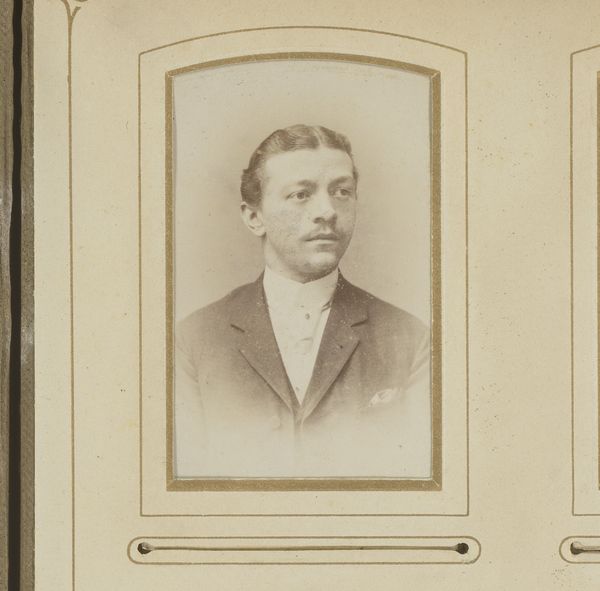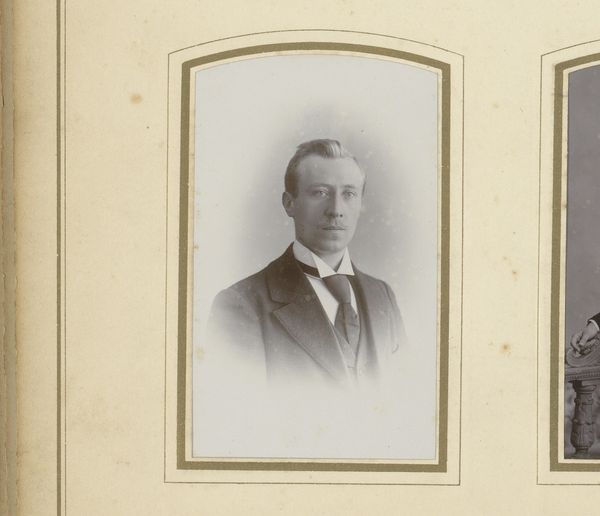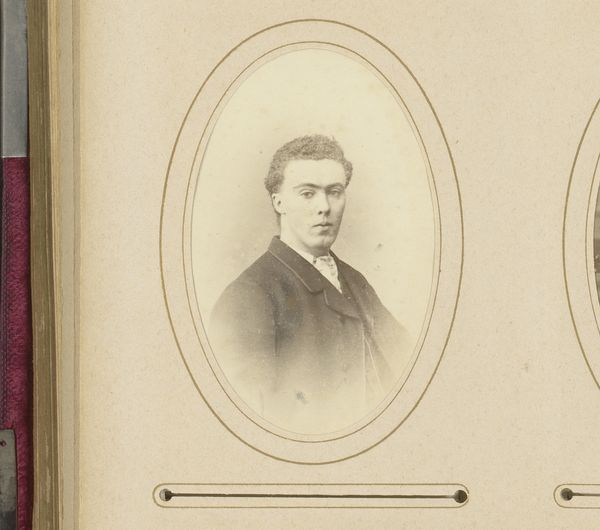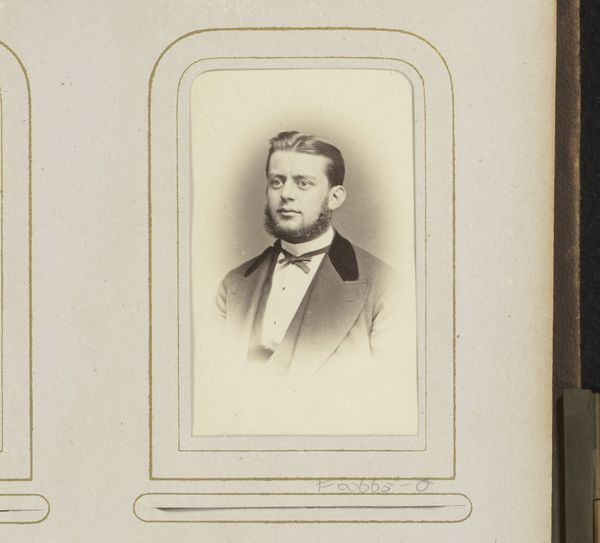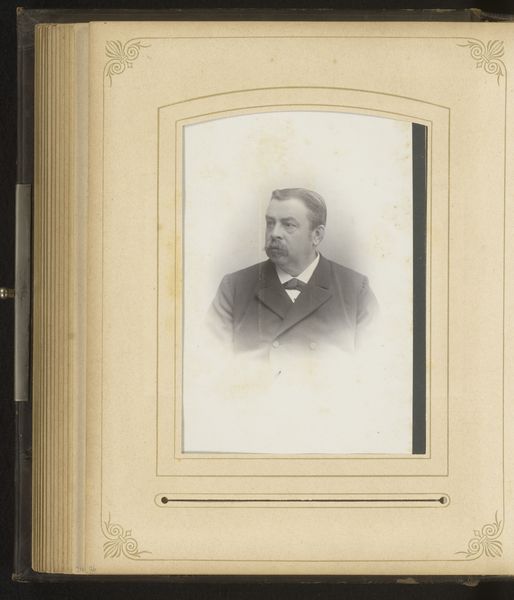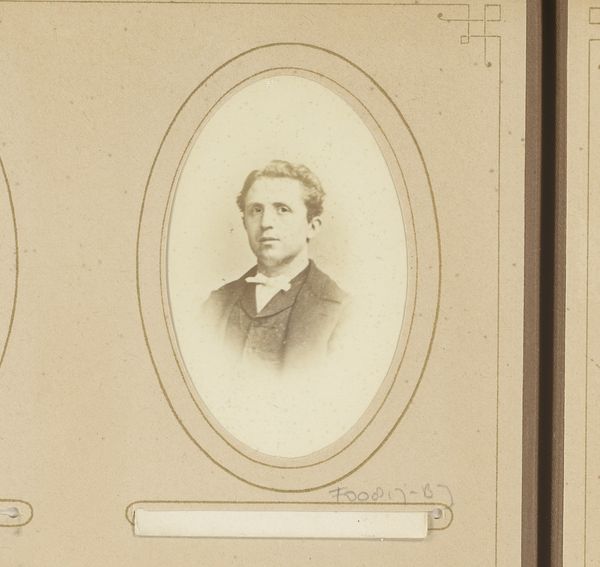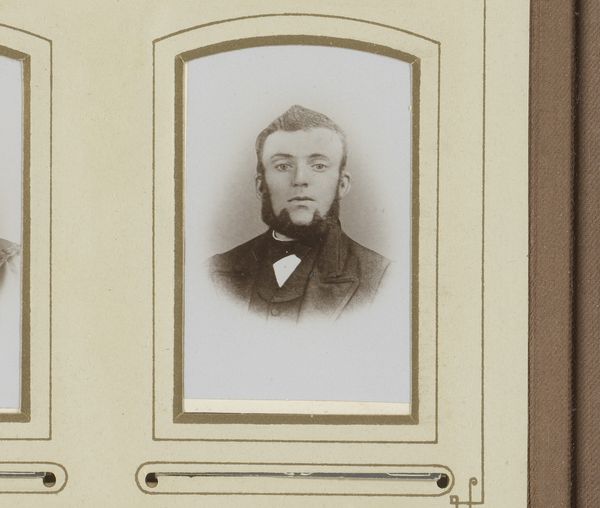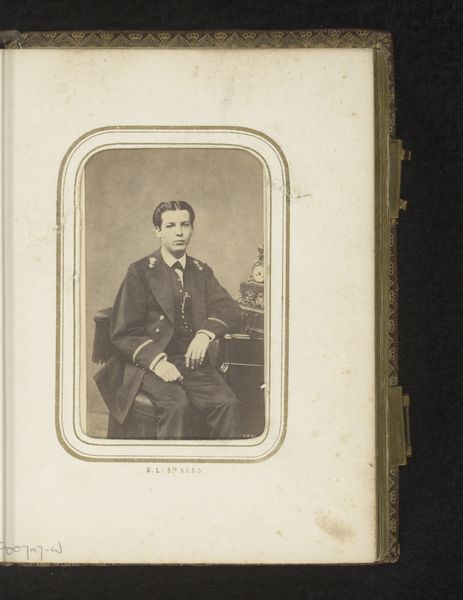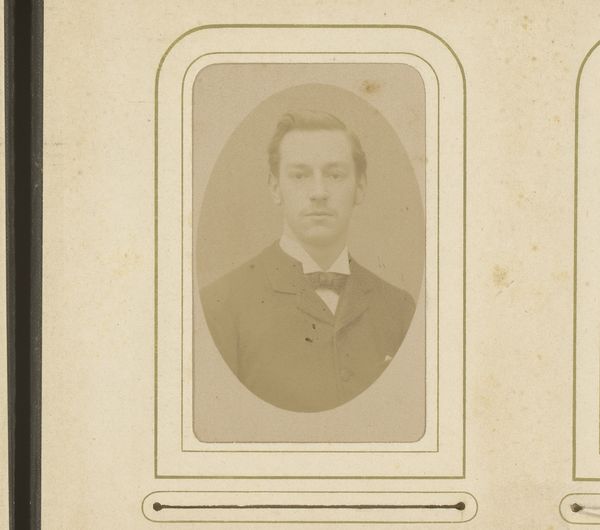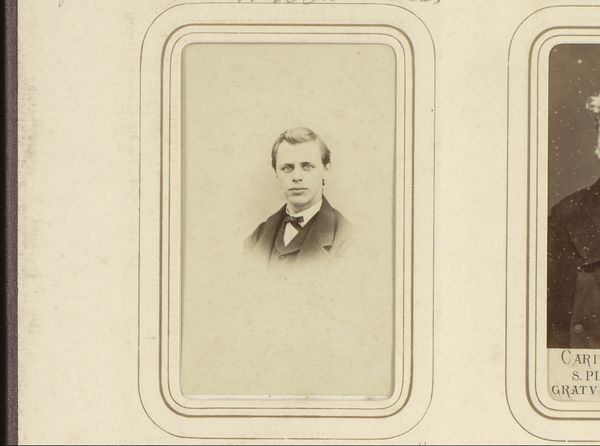
photography, gelatin-silver-print
#
portrait
#
photography
#
gelatin-silver-print
#
modernism
Dimensions: height 85 mm, width 51 mm
Copyright: Rijks Museum: Open Domain
Editor: This is a gelatin-silver print, a portrait of a man by Jules Walbott, dating from somewhere between 1880 and 1920. There's a certain formality to it, with the subdued tones and his posture. How do you interpret this work through a formalist lens? Curator: Observe how the light interacts with the man's features, the strong contrast creating distinct geometric shapes in his face and clothing. The tonal range is limited but nuanced, allowing subtle variations in texture to emerge. Do you notice the balance between the sharp focus on the face and the softer focus elsewhere? Editor: I see it, yes. It does draw your eye directly to his face. It’s like the backdrop is almost secondary in importance, serving more as a tonal support than an element of setting. Curator: Precisely. Now consider the composition: the framing within the frame. The photographer uses the geometric shapes to create a contained, almost architectural space for the figure. Walbott is consciously shaping the viewer's gaze with clear, controlled pictorial elements. The photograph transforms from mere image to crafted artifact. What do you make of it? Editor: I'm realizing I was too quick to see this as just a simple portrait. Thinking about the structure and geometric forms highlights how meticulously composed it is. I didn't expect to find so much complexity here! Curator: Art often resides in the details, in the intentional use of form. Approaching artworks with this framework can unveil a rich discourse between materiality, composition, and meaning. Editor: That's incredibly insightful; thank you. This close visual analysis really opened my eyes to a completely different understanding of the photograph.
Comments
No comments
Be the first to comment and join the conversation on the ultimate creative platform.
